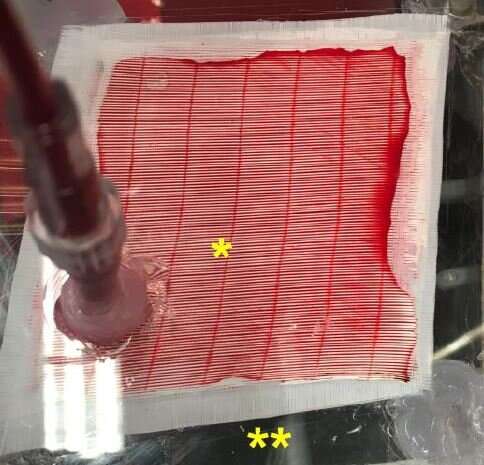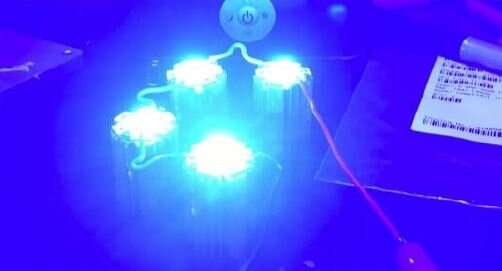October 10, 2019 report
Adding red light to artificial lungs to reduce carbon monoxide in poisoned patients

A team of researchers at Massachusetts General Hospital and Harvard Medical School has found that it is possible to remove carbon monoxide (CO) from blood by shining a red light on it as it moves through an artificial lung. In their paper published in the journal Science Translational Medicine, they describe their device and how well it worked during testing on rats.
Carbon monoxide poisoning is one of the most common types of accidental poisonings. The gas is produced during fires and explosions. When inhaled, it can damage organs and quite often kill the victim. The odorless gas is so dangerous because it displaces oxygen from hemoglobin, resulting in oxygen starvation throughout the body. The current treatment for CO poisoning is administration of 100 percent oxygen, sometimes in a hyperbaric chamber. Such treatments, unfortunately, are not fast enough to prevent damage. Because of that, scientists have been looking for ways to remove CO from the blood faster. In this new effort, the researchers used red light.
Scientists discovered over 100 years ago that shining a red light on blood can break the bonds between CO and hemoglobin, allowing oxygen to take its place. But a means of using light to help carbon monoxide patients has not been thoroughly examined until now.
In their work, the researchers found that cutting open a rat and shining a red light on its lungs did help removed CO, but the technique would not work in humans because our lungs are less transparent. That led them to the idea of combining a red light with an artificial lung.
An artificial lung has a port for accepting a steady flow of blood—membranes are used to remove carbon dioxide and then to replace it with oxygen, just as real lungs do. The rejuvenated blood is then pumped back into the patient. The researchers modified the artificial lung by adding a section in which red light shined on it. This released CO in the blood, making room for the oxygen.

The researchers found that the device removed 79 percent of CO in poisoned rats compared to rats undergoing the same procedure with artificial lungs without red lights. They further report that when the rats had lung damage, the device tripled the speed of CO elimination over control groups. More testing is required to determine if humans will respond in the same manner.
More information: Luca Zazzeron et al. Phototherapy and extracorporeal membrane oxygenation facilitate removal of carbon monoxide in rats, Science Translational Medicine (2019). DOI: 10.1126/scitranslmed.aau4217
© 2019 Science X Network




















